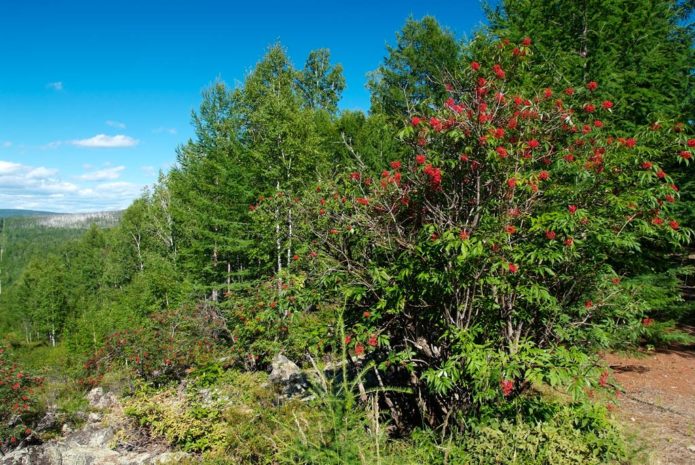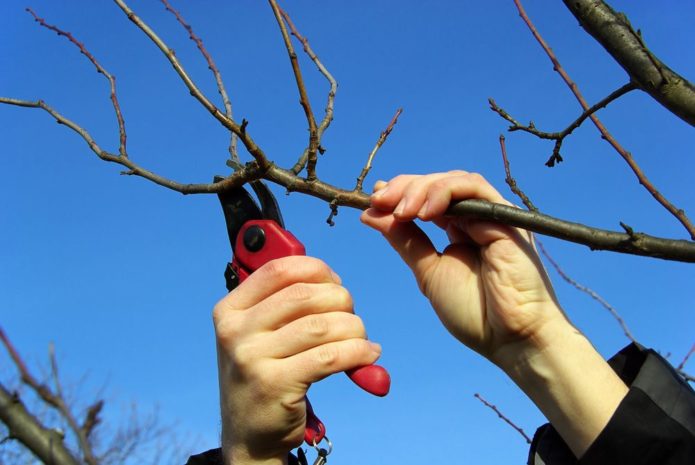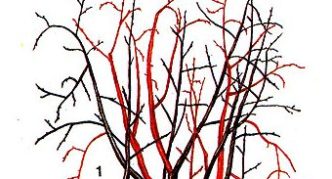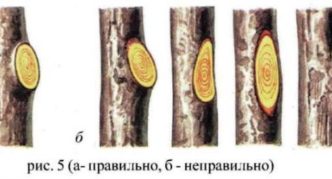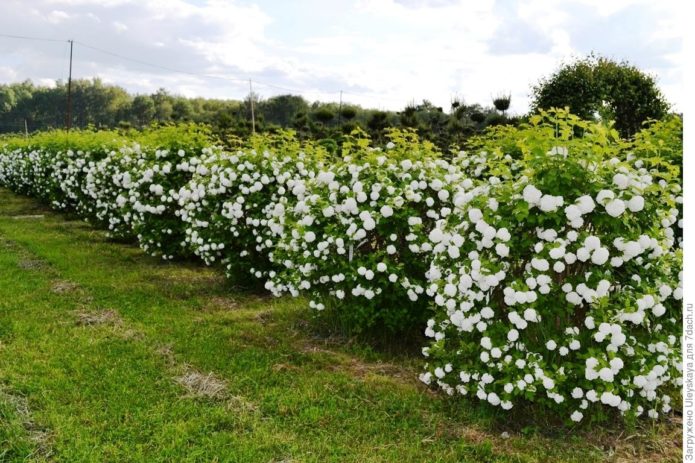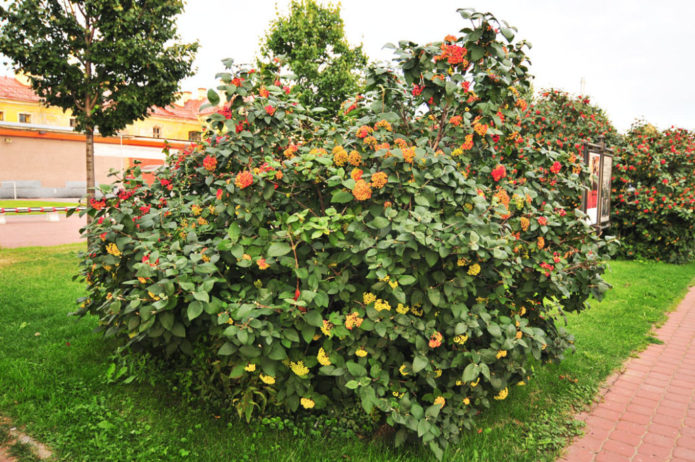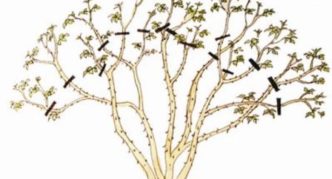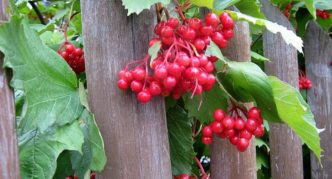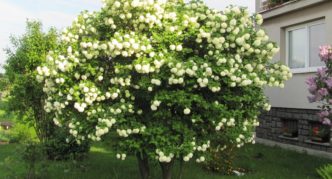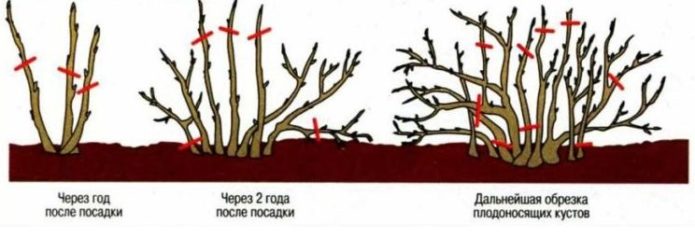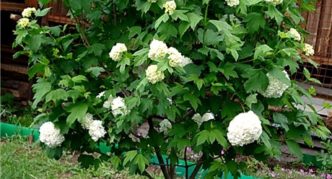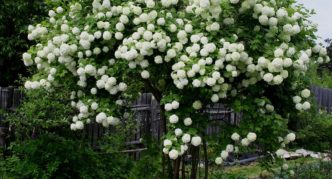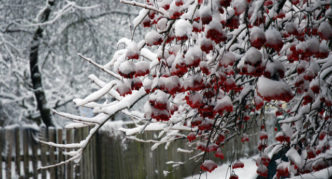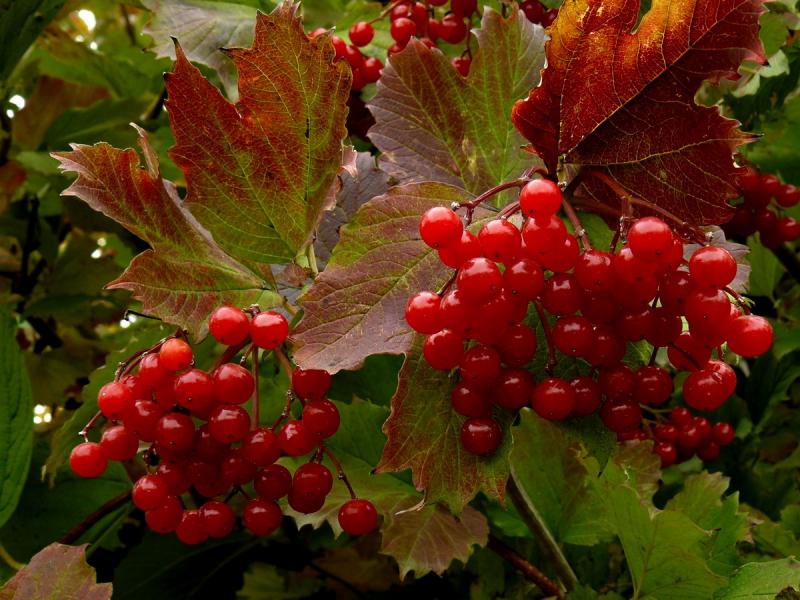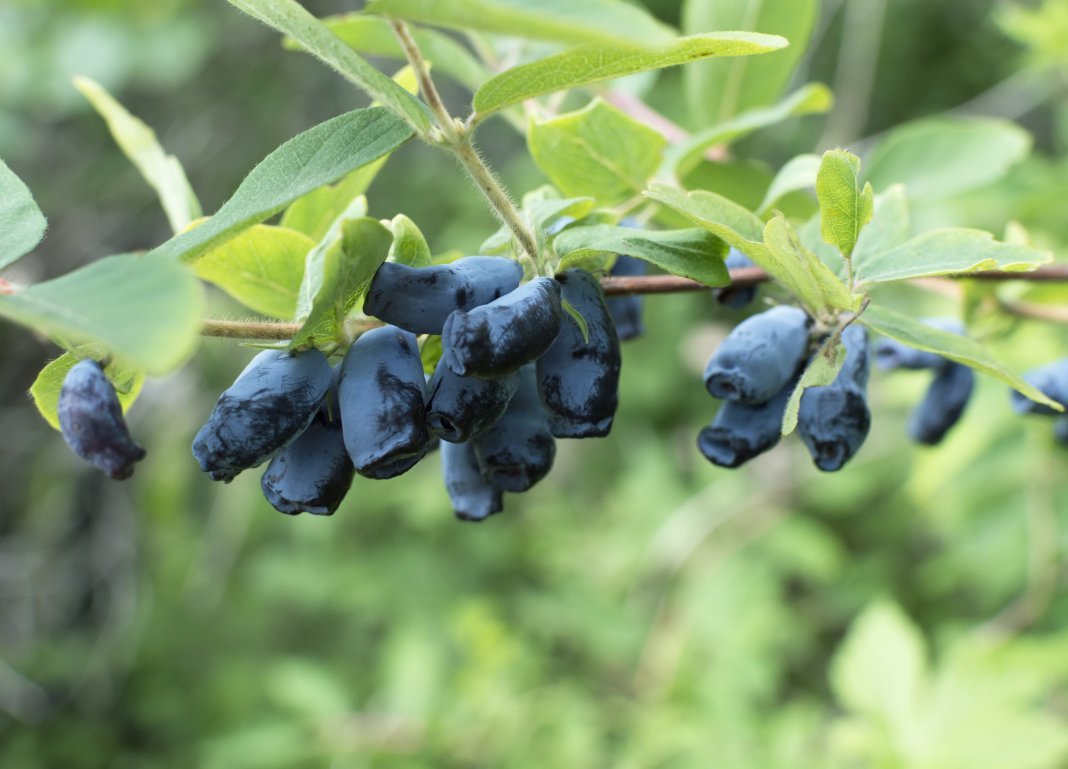Few people remain indifferent to viburnum. Poets, writers, artists, musicians confess love to her. And this is understandable. After all, the viburnum bush can be admired all year round. In spring it is flawlessly white due to its lush color. In summer - luscious green, spreading, alluring. In autumn, they attract magic umbrellas filled with scarlet berries. And in winter, the fruits left on the branches, like small sparks, shine with a ruby light.
Content
Pruning is part of the viburnum care
There is a saying - "Kalina is not raspberry, you can't eat much." However, if we talk about the value of berries, viburnum exceeds raspberries in iron content by 1.5 times, vitamin C - twice, sugars - three times. And valeric acids and various pectins in its composition not only give the fruits a special apple flavor, but also allow them to be used for medicinal purposes with increased irritability, palpitations, as well as with neuroses, vascular spasms and some stomach diseases. A real green pharmacy!
Viburnum, like any spreading tree, needs care. Pruning is part of this care, but the part is so essential and important that it is difficult to imagine viburnum without it. Viburnum is a plant that constantly reaches for the sun. Therefore, without pruning, the number of lateral and coppice branches will grow at a high rate, the middle of the bush will become an impenetrable jungle, and flowering and fruiting will go to the tops of the bush, which will make the fruits available to birds, but not to people. These unsightly metamorphoses will cause the branches to dry out, weaken the plant, spread disease and pests.
Types and schedule of cropping
It is easy to turn an ornamental bush into a "running hippie", but to give it an aristocratic gloss and shine is a task, though not easy, but quite possible.
Types of trimming
First you need to decide on the types of pruning and their seasonality. This is very important, because if you carry out a procedure traumatic for a tree, then you need to know what it is for. There are three types of trimming:
- Sanitary - it is carried out with a recreational purpose: sick, dried out branches that have frozen over the winter are cut off.
- Thinning - this pruning variation involves cutting out healthy, densely growing branches that interfere with the proper development of the bush and the formation of the berry crop.
- Formative - such pruning is necessary for viburnum, grown for decorative purposes to obtain an elegant bush or hedge.
Viburnum responds very well to pruning, including its rejuvenating and thinning variations.At the same time, even the yield does not fall if all actions are carried out accurately, correctly and on schedule.
Timing of pruning viburnum
The graph in this case is not some kind of dead dogma, which must be followed letter by letter. However, there are generally accepted deadlines and recommendations on when what kind of pruning can be done, and when it is better not to touch the tree.
So, the recommendation not to produce thinning pruning of fruiting viburnum species in the fall always raises many questions. Why is it so? After all, the tree at this time prepares for hibernation and is least vulnerable to the perception of injuries. But, you can look at this issue from a different angle. Kalina, bearing fruit, completes its growing season. Winter and severe frosts await her ahead. And, although she is an unpretentious tree and perfectly tolerates low temperatures, there is no complete confidence that the plant will wake up in spring without frostbitten branches. There are statistics that up to 10% of the lignified material perishes during the winter. The preserved trunks and branches will generally protect each other from winds and frosts.
But the decorative types of viburnum are not recommended to be cut in the spring, otherwise it will remain without active peduncles and will lose its abundant snowy beauty.
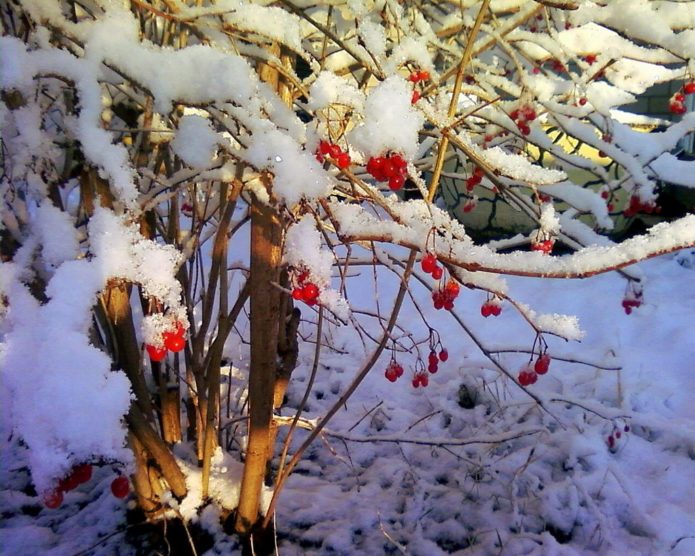
Kalina is not recommended to be cut in winter - although it is unpretentious, it can lose some branches due to frost
If you generously cut off the fruiting viburnum in the fall by 25-30%, and in the spring you discover that another 10% have died, then a real disaster will come in terms of yield. The viburnum will certainly release a lot of new shoots over the summer, but they will become berry-bearing only in the second season. Therefore, if you do not want to be left without a crop and fly like plywood over Paris, then it is better not to produce thinning pruning in winter. Only sanitary!
Table: Viburnum trimming schedule
| Trim type | Autumn | Winter | Spring | Summer |
| Sanitary | Held at any time of the year. All non-viable branches are removed, thereby blocking the spread of diseases. Dry branches are trimmed to healthy tissue. The cut is made over the bud facing outward, but not inwardly. | |||
| Thinning | Not | Not | After the start of sap flow in the plant. The term is from late April to early June. | During the summer, lateral growths of the current year and root growth are removed. |
| Formative | After falling leaves. The term is from the end of September to the end of October. | Not | Before the start of sap flow. April - early May. | Held two to three times during the summer. The tops of the plant and lateral growths are removed. |
Thinning pruning technology
All types of pruning are very important for viburnum. But, nevertheless, the role of the first violin is played by the thinning and formative. It is on them that the appearance, and grooming, and the classic transition from the image of a "hippie" to the image of an aristocrat depend.
Thinning pruning is considered to be rejuvenating in some way, because not only the branches that thicken the silhouette of the bush, but also old healthy branches are subject to cutting. It is important to build such a scheme of rejuvenation so that flabby deadwood over 12–15 years old was replaced by new stems, gaining strength and yielding a harvest in the second year. Aging of a bush without rejuvenating the branches can lead to a weakening of immunity to diseases, vulnerability to unwanted insects, a decrease in yield and decorativeness.

The bush is so thickened with unnecessary branches that neither the sun nor the air can penetrate inside it - it can only be cured by thinning and rejuvenating pruning
The thinning pruning technology is as follows:
- Under the root of the garden pruner, the root growth of the current year is cut out, growing both outside the frame branches and inside the bush. You should not wait until it fills the entire space near the trunk and takes away all the juices from the main trunks.
- When replacing old branches, new shoots are left from the root. The best branches are considered to be even in shape and straight-growing, but not lying vertically to the ground, gnarled, curved or criss-crossing.
- Old branches marked for removal are cut down at the root. The pruner will not take them, so the manipulation is carried out with a hacksaw.
- The knots growing downward, umbrellas from last year's berries and top-growth growths are removed. This is the name for those that grow in a bundle on large diameter stumps.
- The tops of too high shoots are cut off. They are impractical and unattainable neither in terms of caring for them, nor in terms of harvesting. Indeed, because of the fragility of the viburnum branches, you cannot attach a stepladder to them!
- In the process of thinning pruning, there is always the opportunity to cut off branches damaged by drought, frost, disease or insect pests. All contaminated material must not be used to make support poles or to be placed in a compost pit. Only burning it is possible.
Photo gallery: rules for pruning viburnum
- This bush has a lot of frame trunks - their number should be reduced to 7-8 pieces
- The extra trunks to be cut at the very root are shown in red
- When removing side branches, a 45-degree cut is made above the outward bud
- The figure shows examples of correct and incorrect cuts
Formative pruning
For formative pruning, not only decorative varieties of the Boule-de-Nege type are suitable, but also the most ordinary varieties of red fruiting viburnum. After all, the natural decorativeness of the shrub is manifested at any time of the year. The gardener's task is only to highlight it by creating a bright spot in the garden. This requires competent pruning.
Viburnum decorative
Shaping haircuts in portions can be carried out throughout the growing season. Spring is reserved for sanitary cleaning. In the summer, viburnum is modeled under a standard tree or under a spreading bush. In autumn, it is recommended to trim and remove thickening.
From viburnum, you can form a hedge, an elegant ball, an elongated pyramid and some other simple shapes. But graceful figures like from boxwood, most likely, will not work, because viburnum branches tend to quickly grow stiff and grow overgrown with numerous dense layers, while losing their flexibility. Nevertheless, a beautiful well-groomed bush can become the center of attraction for a garden and a source of pride for its owners.
How to form the perfect bush from an adult viburnum
If we let the viburnum drift on its own and leave it without pruning, we get a "neglected garden": disorderly branches 2-3 meters high, shapelessness, dead wood, deflections, sagging and clutter.
If you follow it throughout the season and throughout the life of the viburnum, then we will get a "wonderful garden": blooming double white snowballs-inflorescences, bright brushes of berries, juicy green foliage, an ideal geometric shape of a bush and admiration of neighbors.
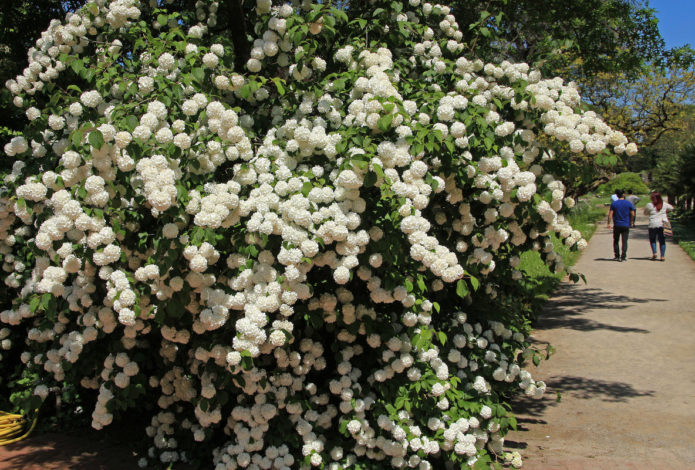
Graceful figures, like from boxwood, will not work from viburnum, but abundant flowering is guaranteed
The second option is undoubtedly preferable. Therefore, we arm ourselves with a pruner for cutting thin shoots and a hacksaw for cutting branches with a diameter of more than 2 cm.The scheme for pruning a viburnum for an ideal bush is quite simple:
- In the fall, after leaf fall or in the spring, before the start of sap flow, first of all, take a critical look at the bush and count the number of skeletal trunks in it. Mark 7–8 of them that have a perfectly even structure and identify them with signal ribbons. Cut the rest of the trunks together with the side branches on them.
- Start cutting off the lateral branches on the remaining skeletal branches.The sides are cut off that are directed to the center of the bush, because it is they who will create an impenetrable forest in the summer.
- For the first summer haircut, you will need a fine mesh net, which will need to cover the bush and give it the desired shape in accordance with its available dimensions. All shoots that go beyond the grid must be cut. As a rule, these are processes of a small diameter - the secateurs will quite cope with them. This trim is considered a modeling haircut.
- The next summer haircut is carried out no earlier than 17–20 days after the first. The mesh is no longer required, since the silhouette of the bush is completely outlined. Trimming will have the character of a corrective haircut. There can be 2-3 such manipulations per season.
Photo gallery: the formation of a bush from an adult viburnum
- To shape the bush on skeletal branches, it is necessary to cut off the apical shoots
- A fence made of wooden stakes will look very decorative if you plant the most ordinary viburnum next to it
- A perfect ball is formed from a bush of decorative viburnum on 5-6 frame branches
- The shape of a ball can be given to a viburnum bush of the most common fruiting variety
How to form the perfect viburnum bush of the first year of life
This option is simpler than the first, because you don't have to deal with sawing old trunks, forming frame trunks equidistant from the center. But the result of the work can only be enjoyed for 3-4 years.
The actions that must be performed from the first year of the plant's life are as follows:
- After planting a young sprout of viburnum in open ground in spring or autumn, remove all shoots from it, leaving only 3-4 buds. The cut is made over the kidney at an angle of 450.
- In the summer period of the first year of life, further shortening of the grown shoots and processes is expected. The recommended length from the root is 40–45 cm. The tops above this length are cut off.
- By autumn, a single-planted sprout will begin to grow root shoots. It is cut at the root, with the exception of 5–7 branches, which will later take on the role of frame trunks.
- The following spring and summer, the abandoned frame trunks must be shortened, bringing the length of each of them to 30–40–45 cm.
- Repeat steps 3 and 4 from year to year until a bush of the desired size and shape is formed.
How to form a standard tree
It is much more difficult to create a standard tree from viburnum than to form a bush. It's all about its natural feature to give birth to dozens of coarse root shoots. The plant thus insures itself against extinction.
The task of the gardener in this case is to strictly monitor and remove in time all the shoots coming from the root, except for the one and only one chosen as the stem. It should be the most powerful, tall, perfectly straight trunk. Cutting to the root of all other trunks that interfere with the growth and development of the main one can be carried out regardless of the season.
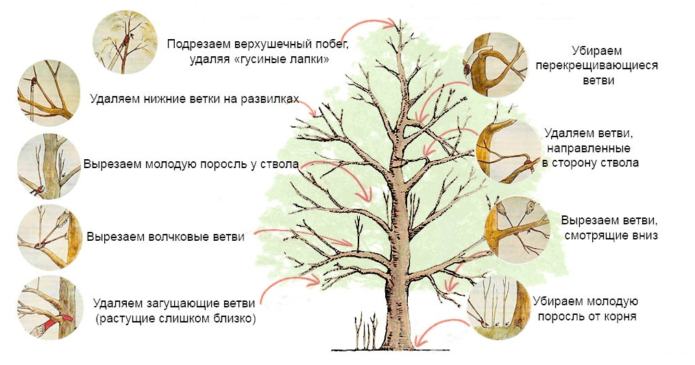
After the completion of the formation of the standard trunk, the tree is maintained in shape due to the techniques indicated in the figure
The main trunk needs to be fed twice a year so that it receives full nitrogen-phosphorus-potassium nutrition. Mulching with peat compost and sawdust in the near-trunk circle will allow the trunk to quickly harden and gain a height of 45-50 cm. This length is the minimum for creating a trunk. But it can be at a height of 50–100 cm from the ground. It is on this segment that you will have to cut off all lateral shoots, down to the smallest ones. Shoots growing above the selected mark in the so-called “apical buds” are not cut out. She is given a green street to grow, but only until the crown thickens and requires thinning pruning.
When the standard barrel reaches 1.5 meters in length, it is necessary to pinch its top. Further, everything depends only on the imagination and skills of the gardener.You can form a ball tree, a pyramid tree, a trapezoid tree. For this, a net and a garden pruner are used.
Tips for beginner viburnum decorators
In principle, viburnum is a non-capricious plant. It will easily accept all your rules and easily build up everything unnecessarily cut off due to initial inexperience. But, nevertheless, the following simple tips will help not to harm the bush and give it even more decorative effect:
- After pruning, considered a shock operation, the viburnum should be fed. From minerals in spring and autumn, phosphorus-potassium fertilizers are suitable. From organic - peat compost, which will serve as food for the roots, and mulch, protecting them from unfavorable external temperatures.
- All sections over 1.5 cm in diameter are processed with garden varnish or paint. This is necessary so that neither harmful microorganisms nor large pests with their offspring penetrate into the cracks.
- If pruning is applied to fruiting varieties of red viburnum, then one should take into account the fact that the plant bears fruit on annual shoots. Therefore, all annual growths can be removed only after picking the berries. Otherwise, the declared yield cannot be achieved.
- The skeletal trunks of plants, despite their lignified structure, are very fragile - under the influence of wind or precipitation, they can bend, break or acquire a curved appearance. To prevent this from happening, it is recommended to use strong supports in the form of dense wooden or metal poles. If the viburnum grows as a bush, then the support is driven into the center of the bush, and all skeletal branches around it are tied with a single ribbon. If the viburnum is formed in the form of a standard tree, then its trunk is also protected by a support and a garter.
Photo gallery: examples of well-groomed trees and bushes of viburnum
- This viburnum is still young, but already correctly formed in the form of a standard tree
- This Boul de Neige bush is formed with a regular lush crown on 5-6 frame branches
- With proper pruning, there will be more flowering balls on the viburnum, and they will be better
- In winter, hanging clusters of viburnum look even more magical than in summer
Video: pruning viburnum in spring
A well-groomed viburnum is, indeed, a sign of a wonderful garden. And also a measure of cleanliness, care and skillful hands of a gardener. By the state of this red-berry plant, one can judge the situation of the entire dacha economy. A beautiful and decorative bush means that the entire area is well-groomed. Sloppy and neglected - it means that the whole garden is the very "hippie", which it is better to avoid. We wish you all order and prosperity on your six hundred square meters!


